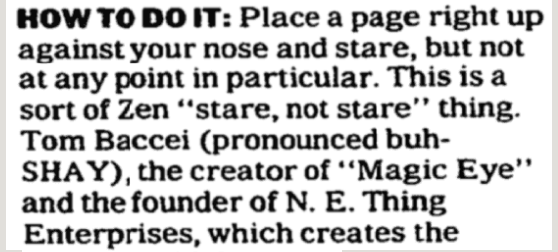
Have you ever noticed that there is something strange about the Mandarin word for gas, wǎsī? Looking at the written form 瓦斯, it just doesn’t seem like a normal Chinese compound word. Let’s see if we can figure out what’s going on. 加油! 1/
The two characters used to write wǎsī are 瓦, which by itself writes wǎ ‘roof tile’, and 斯, which writes an ancient Chinese demonstrative sī meaning ‘this, here’. It doesn’t seem credible that a compound word meaning ‘gas’ could be constructed from these two parts. 2/
Moreover, the word sī ‘this, here’ is obsolete. Nowadays the character 斯 is most commonly found in Chinese transliterations, to represent a foreign [s] sound. For example, Sparta in Mandarin is Sībādá, written 斯巴達, and Klaus is Kèláosī 克勞斯. 3/
There are a number of characters like 斯 that originally wrote words which have now fallen out of use, and are now almost exclusively used to transliterate sounds of foreign words. Other examples of such “phonogram” characters are bā 巴 and kǎ 卡. 4/
Other characters are commonly used to transliterate foreign sounds as phonograms, but also retain their original function of writing words (or morphemes) of spoken Mandarin, like 加. It writes jiā ‘to add’ but also foreign syllables ga and ka, as in Jiānádà 加拿大 ‘Canada’. 5/
So: The presence of 斯 in the written form of the Mandarin word wǎsī ‘gas’ suggests that the word might be a foreign borrowing. And wǎsī does sound a bit like the European words for ‘gas’: English gas, French gaz, Dutch gas, German Gas, Italian gas, etc. 6/
But there is a problem with the idea that Mandarin wǎsī is borrowed from a European language’s word for ‘gas’. The character wǎ 瓦 isn’t used in Chinese transliterations of foreign syllable ga. 7/
Foreign [ga] is normally transliterated with a character pronounced jia in Mandarin, like Jiānà 迦納 for “Ghana” and Jiālìlüè 伽利略 for “Galileo”. If Mandarin speakers had borrowed the word “gas” from a European language, we would expect jiāsī, written something like 加斯. 8/
Another possibility is that the word was transliterated by speakers of a non-Mandarin Chinese language, for whom the pronunciations of the characters 瓦斯 sounded closer to “gas”. A lot of borrowed foreign words that seem oddly pronounced in Mandarin originated in this way. 9/
A great example is the Mandarin word for ‘ice cream’, bīngqílín 冰淇淋. Bīng 冰 means “ice”, so that part makes sense. But what is qílín? The characters individually write Qí (the name of a river) and lín ‘to filter’. Doesn’t make a lot of sense, does it? 10/
The mystery is solved when you realize that it was speakers of a southern Chinese language who chose these characters to match the sounds of the English source word “cream”. AFAIK we don’t know exactly which Chinese language was involved, but … 11/
… note e.g. that 淇淋 is pronounced [ki lim] in Southern Min and [kʰi lim] in Méixiàn Hakka. A speaker of a Southern variety of Chinese imitated the sound of English “cream” as [kʰi lim], then chose characters that matched the pronunciation of those two syllables. 12/
(And it’s no accident that they chose those particular characters not just for the sound, but also because they contain the “water radical” 氵which appears in characters writing words with meanings related to liquid. But that’s a discussion that would take us too far afield.) 13/
The word for “ice cream” then spread across China in written form as 冰淇淋, and was pronounced differently by speakers of different Chinese languages according to the local way of reading the characters. And that’s how we get the mysterious Mandarin word bīngqílín. 14/
Could something like that explain where wǎsī 瓦斯 came from? It’s not a bad hypothesis. 15/
You will be sorry to learn that the answer is a disappointing No. If we look at the pronunciation of 瓦 across Chinese language varieties, we find pronunciations like wa and nga, but nothing like ga. 16/
Are you ready for the answer? Want to know where the Mandarin word wǎsī 瓦斯 really comes from? Read on! 17/
It’s … Japanese! And Japanese borrowed it from Dutch! So how does that work? 18/
If you are familiar with Japanese, you know that in the modern script foreign loanwords are typically written in the katakana syllabary. The Japanese word for “gas”, gasu, is written ガス. It is one of many words borrowed from Dutch into Japanese in the 17th-19th centuries. 19/
Back then, the use of katakana for foreign loanwords (gairago) was not yet established. The Japanese syllables gasu were rendered with two Chinese characters — kanji — for their sound value alone: two kanji with the Japanese pronunciations ga and su respectively. 20/
They were—you guessed it!—瓦斯. And it was this Japanese word for “gas”, written 瓦斯, that entered Chinese in written form, like the great mass of other Japanese words that were borrowed into Chinese in the late 19th and early 20th centuries. 21/
Rather than imitating the sound of the Japanese word, Chinese speakers simply pronounced the written characters in the Chinese way, and thus Japanese gasu 瓦斯 became Mandarin wǎsī 瓦斯. And in time, the Japanese katakana form ガス displaced the kanji form 瓦斯. 22/
That change in the written Japanese form obscured the historical connection between the Chinese word and the Japanese word. 23/
And there you have it: That’s why the pronunciation and written form of the Mandarin word for “gas” both look so odd. 24/24
• • •
Missing some Tweet in this thread? You can try to
force a refresh






